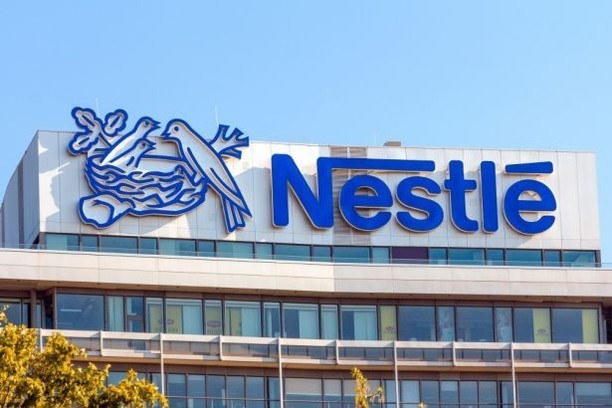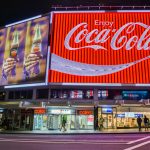A Legacy of Trust: How the Nestlé Baby Milk Scandal Forged a New Era of Corporate Responsibility
The story of Nestlé's baby milk scandal is a quintessential case study in modern corporate history. It is a cautionary tale about the perils of unchecked ambition and a testament to the long, difficult road to redemption. The international boycott that followed the scandal didn't just hurt sales; it fundamentally redefined how the global food giant operated, a shift so profound it continues to shape the company's leadership and in doing so, offered enduring lessons for businesses grappling with their social and ethical responsibilities.
What Was the Baby Milk Scandal and Why Was It So Damaging?
The scandal was a direct consequence of Nestlé's aggressive marketing of infant formula in developing nations during the 1970s. As birth rates in Western countries declined, Nestlé sought new markets in the Global South. Its strategy was ruthless: the company deployed "milk nurses"—sales representatives in nurses' uniforms—to hospitals and homes to distribute free samples and promote formula as a modern, superior alternative to breastfeeding.
The consequences were devastating. In regions with poor sanitation, mothers would mix the powdered formula with contaminated water, leading to severe bacterial infections, diarrhea, and, tragically, infant mortality. Furthermore, the practice of providing free samples for a few days suppressed a mother's natural lactation, creating a cycle of dependency. Impoverished families were then forced to purchase the expensive formula, often over-diluting it to make it last, which led to widespread malnutrition.
The scandal was particularly damaging because it targeted the most vulnerable members of society. The public perception of Nestlé shifted from a trusted food provider to a corporation that prioritized profit over the lives of infants. The boycott was a powerful and unprecedented expression of consumer outrage, revealing that a brand's reputation could be held hostage by its ethical conduct.
This outrage, now a recurring theme in corporate history, has ironically become a model for businesses that turn public attention and scandal into a source of revenue, highlighting the evolving and complex relationship between corporate behavior and consumer reaction.

Philipp Navratil the new CEO of Nestle
How Did the Boycott Work, and What Tactics Did Activists Use?
The boycott, which began in the United States in 1977 and quickly spread, was a direct response to these marketing practices. Led by grassroots organizations like the Infant Formula Action Coalition (INFACT) and the International Baby Food Action Network (IBFAN), the movement was a masterclass in consumer activism.
Activists utilized a variety of highly effective tactics:
- Public Awareness Campaigns: They published and widely distributed pamphlets and reports like The Baby Killer and "Nestlé Kills Babies," which used stark language and clear evidence to expose the company's practices.
- Targeted Protests: Activists organized protests outside Nestlé headquarters, picketed supermarkets, and even held symbolic events like the "Boston Nestea Party," where Nestlé products were publicly dumped.
- Shareholder and Institutional Pressure: The boycott wasn't just for individuals. Activist groups directly engaged with churches, universities, and other large institutions, persuading them to divest from Nestlé or ban its products from their campuses. This created significant financial and reputational pressure.
- Lobbying for International Regulation: The movement's ultimate goal was not just to punish one company, but to create lasting change. Their lobbying efforts led directly to the 1981 WHO/UNICEF International Code of Marketing of Breast-milk Substitutes, a global framework that holds all companies accountable.
How Did Nestlé Respond, and How Did the Boycott Shape Its Future?
Nestlé's initial response was defensive and dismissive. The company denied any wrongdoing, arguing that it was not responsible for the lack of clean water or poverty in the regions where it operated. It even sued the Swiss activist group that published the pamphlet for libel. While Nestlé technically won the case, the judge's moral condemnation that the company "must fundamentally change" its marketing practices was a victory for the activists.
Under sustained public pressure, Nestlé was forced to change its approach. The company had to completely overhaul its marketing practices and subject itself to external scrutiny. In 1984, Nestlé became the first major corporation to agree to abide by the WHO Code, leading to the suspension of the boycott.
However, the peace was short-lived. The boycott was relaunched in 1988 after activists alleged that Nestlé was violating the code through indirect marketing and lobbying. This ongoing scrutiny has forced Nestlé to remain on its toes for decades.

A Business School Case Study: Lessons in Ethics and Crisis Management
The Nestlé scandal is now a staple of business school curricula worldwide, a mandatory case study in ethics, marketing, and crisis management. Students learn that the company's biggest mistake wasn't just its unethical marketing; it was its initial failure to understand its role in a complex global system. The case teaches future leaders that:
- Social License to Operate: A company's success is not just about its products; it depends on its "social license to operate"—the public's unspoken permission to conduct business. When that license is revoked, the business is fundamentally at risk.
- Reputation as an Asset: A brand's reputation is a financial asset. The boycott and negative press directly impacted Nestlé’s brand equity, proving that a company's image is as important as its balance sheet.
- Crisis Management Requires Authenticity: Nestlé’s initial denials only deepened the crisis. The case demonstrates that effective crisis management requires genuine acknowledgment of wrongdoing, not just legalistic defenses.
The Business of Redemption: A Shift in Strategy and a New Philosophy
The scandal didn't just prompt a change in marketing; it catalyzed a fundamental redefinition of Nestlé's entire business model. The company's post-scandal strategy is built on two key pillars: diversification and a new business philosophy known as Creating Shared Value (CSV).
- Strategic Diversification: Recognizing the reputational risk of being so heavily reliant on a single, ethically fraught product category, Nestlé embarked on an aggressive diversification and acquisition spree. This strategy allowed it to grow into a sprawling global food and beverage giant with over 2,000 brands. This vast portfolio now insulates the company from a single-issue boycott and has helped it shift its focus to more profitable and less controversial markets.
- Creating Shared Value (CSV): This philosophy, developed in the mid-2000s, goes beyond traditional corporate social responsibility (CSR) and seeks to embed social and environmental consciousness into the core of the business. For Nestlé, this means investing in the rural communities that provide its raw materials, promoting nutrition through product reformulations, and engaging in water stewardship. The company claims that by creating value for society, it also creates long-term value for its shareholders. However, the CSV model has its critics. Many see it as a sophisticated form of "greenwashing," arguing that it simplifies complex ethical dilemmas and prioritizes investments that offer the best return for the company, rather than those that are most critical for society.
The Long Road to Trust: Are Nestlé's Modern Brand Challenges Different?
Even today, decades after the baby milk scandal, Nestlé continues to face significant ethical challenges. The ongoing boycott has expanded to encompass new issues, including:
- Water Controversies: Nestlé has faced intense criticism for its aggressive water-bottling operations in drought-stricken regions of the world, with activists accusing the company of privatizing a public resource.
- Child Labor in the Supply Chain: Despite pledges to eliminate it, reports continue to surface about child labor in the cocoa supply chain that supplies Nestlé's chocolate business.
- The "Unhealthy" Portfolio: A 2021 internal document from Nestlé was leaked, revealing that over 60% of its mainstream food and drink products fail to meet a "recognized definition of health." The company is now trying to reformulate products to reduce sugar, salt, and fat, a process that is both difficult and expensive.
For a dedicated group of activists and consumers, the Nestlé brand is permanently stained. For the wider public, the memory of the scandal has faded, but the lingering effects on brand trust are undeniable. The Nestlé saga proves that in the modern marketplace, a powerful brand can rebuild its profits, but it may never fully reclaim its reputation.
Related: Netpeak US Success Stories: Digital Marketing Wins That Deliver Results














